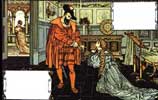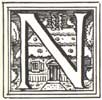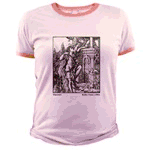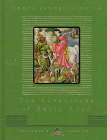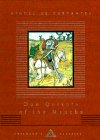| Introduction | Annotated Tales | eBooks | Bookstore | Illustration Gallery | Discussion Board | Blog |
 |
|
|
Walter Crane From The Encyclopædia Britannica Eleventh Edition (1910–1911): English artist, second son of Thomas Crane, portrait painter and miniaturist, Walter Crane was born in Liverpool on the 15th of August 1845. The family soon removed to Torquay, where the boy gained his early artistic impressions, and, when he was twelve years old, to London. He early came under the influence of the Pre-Raphaelites, and was a diligent student of Ruskin. A set of coloured page designs to illustrate Tennyson's "Lady of Shalott" gained the approval of William James Linton, the wood-engraver, to whom Walter Crane was apprenticed for three years (1859-1862). As a woodengraver he had abundant opportunity for the minute study of the contemporary artists whose work passed through his hands, of Rossetti, Millais, Tenniel and F. Sandys, and of the masters of the Italian Renaissance, but he was more influenced by the Elgin marbles in the British Museum. A further and important element in the development of his talent, was the study of Japanese colour-prints, the methods of which he imitated in a series of toy-books, which started a new fashion. In 1862 a picture of his, "The Lady of Shalott," was exhibited at the Royal Academy, but the Academy steadily refused his maturer work; and after the opening of the Grosvenor Gallery in 1877 he ceased to send pictures to Burlington House. In 1864 he began to illustrate for Mr Edmund Evans, the colour printer, a series of sixpenny toy-books of nursery rhymes, displaying admirable fancy and beauty of design, though he was limited to the use of three colours. He was allowed more freedom in a delightful series begun in 1873, The Frog Prince, &c., which showed markedly the influence of Japanese art, and of a long visit to Italy following on his marriage in 1871. The Baby's Opera was a book of English nursery songs planned in 1877 with Mr Evans, and a third series of children's books with the collective title, A Romance of the Three R's, provided a regular course of instruction in art for the nursery. In his early "Lady of Shalott" the artist had shown his preoccupation with unity of design in book illustration by printing in the words of the poem himself, in the view that this union of the calligrapher's and the decorator's art was one secret of the beauty of the old illuminated books. He followed the same course in The First of May: A Fairy Masque by his friend John R. Wise, text and decoration being in this case reproduced by photogravure. The "Goose Girl" illustration taken from his beautiful Household Stories from Grimm (1882) was reproduced in tapestry by William Morris, and is now in the South Kensington Museum. Flora's Feast, A Masque of Flowers had lithographic reproductions of Mr Crane's line drawings washed in with water colour; he also decorated in colour The Wonder Book of Nathaniel Hawthorne, and Margaret Deland's Old Garden; in 1894 he collaborated with William Morris in the page decoration of The Story of the Glittering Plain, published at the Kelmscott press, which was executed in the style of 16th-century Italian and German woodcuts; but in purely decorative interest the finest of his works in book illustration is Spenser's Faerie Queene (12 pts., 1894-1896) and the Shepheard's Calendar. The poems which form the text of Queen Summer (1891), Renascence (1891), and The Sirens Three (1886) are by the artist himself. In the early 'eighties under Morris's influence he was closely associated with the Socialist movement. He did as much as Morris himself to bring art into the daily life of all classes. With this object in view he devoted much attention to designs for textile stuffs, for wall-papers, and to house decoration; but he also used his art for the direct advancement of the Socialist cause. For a long time he provided the weekly cartoons for the Socialist organs, Justice and The Commonweal. Many of these were collected as Cartoons for the Cause. He devoted much time and energy to the work of the Art Workers' Guild, and to the Arts and Crafts Exhibition Society, founded by him in 1888. His own easel pictures, chiefly allegorical in subject, among them "The Bridge of Life" (1884) and "The Mower" (1891), were exhibited regularly at the Grosvenor Gallery and later at the New Gallery. "Neptune's Horses," which, with many other of Mr Crane's pictures, came into the possession of Herr Ernst Seeger of Berlin, was exhibited at the New Gallery in 1893, and with it may be classed his "The Rainbow and the Wave." His varied work includes examples of plaster relief, tiles, stained glass, pottery, wall-paper and textile designs, in all of which he applied the principle that in purely decorative design "the artist works freest and best without direct reference to nature, and should have learned the forms he makes use of by heart." An exhibition of his work of different kinds was held at the Fine Art Society's galleries in Bond Street in 1891, and taken over to the United States in the same year by the artist himself. It was afterwards exhibited in the chief German, Austrian and Scandinavian towns, arousing great interest throughout the continent. Mr Crane became an associate of the Water Colour Society in 1888; he was an examiner of the science and art department at South Kensington; director of design at the Manchester Municipal school (1894); art director of Reading College (1896); and in 1898 for a short time principal of the Royal College of Art. His lectures at Manchester were published with illustrated drawings as The Bases of Design (1898) and Line and Form (1900). The Decorative Illustration of Books, Old and New (2nd ed.,) London and New York, 1900) is a further contribution to theory. A well-known portrait of Mr Crane by G. F. Watts, R.A., was exhibited at the New Gallery in 1893. There is a comprehensive and sumptuously illustrated book on The Art of Walter Crane, by P. G. Konody; a monograph (1902) by Otto von Schleinitz in the Kiinstler Monographien series (Bielefeld and Leipzig); and an account of himself by the artist in the Easter number of 1898 of the Art Journal. Below are links to the fairy tale illustrations of Walter Crane. Click on the image to visit the page featuring all of the illustrations for each tale. Titles of some books illustrated by Walter Crane: Walter Crane's New Toybook (1874) Crane, Walter. The Three Bears. London: George Routledge and Sons, 1873. Crane, Walter. Beauty and the Beast. London: George Routledge and Sons, 1874. Crane, Walter. The Frog Prince. London: George Routledge and Sons, 1874. Crane, Walter. The Marquis Of Carabas: His Picture Book. London: Routledge, 1874. Crane, Walter. The Bluebeard Picture Book. London: George Routledge and Sons, 1875. Crane, Walter. Cinderella. London: George Routledge and Sons, 1875. Crane, Walter. Jack and the Beanstalk. London: George Routledge and Sons, 1875. Crane, Walter. Little Red Riding Hood. London: George Routledge and Sons, 1875. Crane, Lucy, translator. Household Stories from the Collection of the Brothers Grimm. Walter Crane, illustrator. London: Macmillan & Co., 1882. For more information about Walter Crane, please visit the following sites: Elizabeth Nesbitt Room Illustrators Project: Walter Crane Working Class Movement Library: Walter Crane |
|
©Heidi
Anne Heiner, SurLaLune Fairy Tales |

